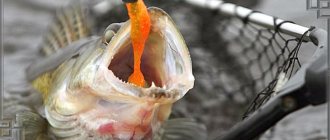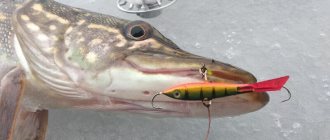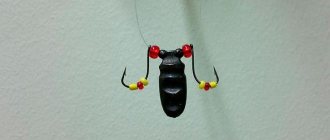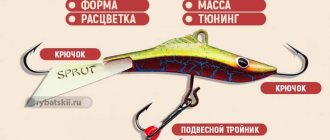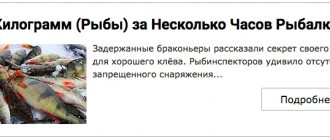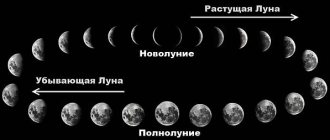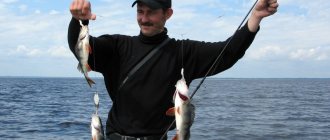Perch can be caught throughout the year, but it is winter perch fishing that is considered the most exciting and exciting, especially on the first and last ice. During these periods, perch is especially active, and its principle of staying in schools makes the fish one of the main objects of hunting. In this article we will thoroughly understand how to catch perch in winter using all available gear.
Pressure level for ice fishing
First of all, we should talk not about the magnitude of pressure, but about its stability. When significant and frequent pressure changes occur, the fish do not have time to adapt to environmental variability. Factors such as water temperature should also be taken into account. When the water temperature decreases, all life processes slow down. This factor also negatively affects the rate of stabilization of vital processes occurring in the fish’s body. In this regard, the fish gets used to the period of pressure only after a couple of days, so during this period you should not count on active biting.
Many experts believe that the pressure is 750 mm. Hg column is optimal, so at this pressure you can count on active fish biting. If this parameter remains stable for several days, then the angler will never be left without fish. But this does not mean at all that a record catch is possible, since there are a number of other factors influencing the activity of the fish.
Most fishermen say so. That record catches are typical for high pressure, as well as for the period of its increase. At the same time, the fish concentrate in the bottom area of reservoirs, so it is very important to choose the right biting tactics.
The influence of atmospheric pressure on fish

Experts say that the mechanism of influence of atmospheric pressure on fish activity is associated with changes in the volume of gas in the fish’s swim bladder. Gas volumes affect the buoyancy of fish. When atmospheric pressure rises, gas volumes decrease and fish begin to be pressed to the bottom layers. If the pressure drops. Then the volumes of gas increase and the fish begin to be pushed closer to the surface layers.
Different species of fish adapt to such changes at different speeds. Fish such as roach and perch react much faster to changes in gas volumes, regulating it. In this case, it is easier for the fish to get rid of excess gas than to supplement the missing volumes. This takes quite a lot of time, although predatory fish adapt much faster compared to peaceful ones. When fish rise to the upper layers, they find themselves in conditions where the oxygen concentration is not as dense as in the bottom layers. This, in turn, negatively affects the general behavior of the fish, reducing biting activity.
The influence of pressure on the bite (activity) of fish. All about fishing on the Dnieper.
How to catch perch in winter
The effectiveness of winter fishing for perch is largely determined by the following tactics:
- Study the bottom topography properly and all its features. Early in the morning and in the evening, the perch occupies the edges; at high pressure, it moves closer to the surface
- Holes are made not 1-2, but a much larger number, at a distance of 5-8 meters from each other.
- You need to throw bait into each hole
- They start fishing from the hole that was fed first, after which they move on to the rest
- If you can't catch a perch, try moving from the shore closer to the middle, exploring all layers of water
Methods for determining atmospheric pressure

To determine the value of atmospheric pressure you will have to use some methods. Alternatively, you can use the Internet, where on websites you can find the weather for the coming days, indicating the air temperature, direction and strength of the wind, as well as the value of atmospheric pressure. Unfortunately, these data do not always coincide with the real state of affairs, as they say. A mechanical barometer will allow you to find out these parameters more accurately.
Important point! If you have a similar device at home, you can keep a journal (notebook) and regularly record its readings. By taking data (information), you can safely plan a fishing trip.
There are other types of devices, such as stormglass, which is a sealed flask with a solution of alcohol, camphor and nitrate. Without some experience, it is almost impossible to understand what is happening in a given flask.
Wind and winter fishing

The presence or absence of wind is another factor that affects the behavior of fish. Most anglers are sure that north and east winds have a negative impact on fishing performance. In addition, the following have an unfavorable effect:
- Sharp and frequent changes in wind direction, which are certainly accompanied by the same pressure changes.
- The presence of strong wind indicates a sharp increase in pressure and an equally sharp decrease in fish activity. In addition, strong winds physically negatively affect the fishing process itself.
- Some anglers believe that if the direction of the wind coincides with the direction of the current, then this is another negative factor.
It is considered a good option when the wind blows from the south, southeast or west, while its strength and direction remain stable for a long time. In addition, you can put up with the situation when there is a slight wind blowing, as well as snow or rain. In any case, you will have to take into account the nature of the reservoir, since the behavior of the fish also depends on other factors, for example, the availability of food supply, which often misleads many, and even more so inexperienced fishermen.
Pressure change
Pressure changes indicate a change in cold and warm currents of air masses. In such conditions, the bite in winter does not stop, but changes along with atmospheric phenomena. The fisherman will have to adapt to the “whims” of nature: select the depth, bait, fishing technique, etc. Sometimes barometer readings in winter can change several times a day, which has almost no effect on the behavior of the fish.
Therefore, the question: what should be the pressure for fishing in winter is not entirely correct. We can say with complete confidence - any. It’s just that in one weather the fish behave actively, in another they behave passively (regarding feeding). Depending on temperature indicators, lighting, and the influence of wind, the fish can either move or stand in the water column. It is recommended to study a specific body of water and find out: the bottom topography, the types of fish that live, their active feeding areas, in order to use the correct fishing method.
Effect of precipitation on fish activity

Precipitation, whether snow or rain, also has a certain impact on the progress of fishing. As a rule, one should not expect fish to become more active due to heavy and prolonged snowfalls. But, if snowfalls have some breaks, then these “windows” are characterized by a significant increase in fish activity, if there is a favorable combination of both atmospheric pressure and wind direction. If the snow is light and can be compared to drizzling rain in calm weather, then you can count on a record catch.
Misconceptions of Anglers - Destruction of Myths and Speculations
The influence of atmospheric pressure on fish biting matters, but not nearly as much as we imagine. After studying the issue, you come to the conclusion that we, fishermen (and not ichthyologists), are mistaken when trying to determine the optimal pressure for fishing in winter. This is such a multifaceted moment of influence on the bite that it is impossible to say anything unequivocally about this. This factor must be considered in conjunction with other phenomena, among which there are much more important ones than the barometer readings. One thing can be said for sure about how pressure affects fish - this factor does not determine the intensity of the bite, but indirectly affects it.
The developed tables of the influence of pressure on fish biting in winter do not reflect reality. Such a truly relevant table can theoretically be created - separately for each pond, lake, small section of a large reservoir, etc. Moreover, after many years of research and observation. And such a schedule will not last long - until, for example, the wind rose or the hydraulic engineering of the reservoir changes. Do you understand the volume of such work on the scale of all water bodies? Therefore, it is impossible to create a single valid biting plan. And what is there reflects, at best, general weather trends and the personal opinion of the compiler.
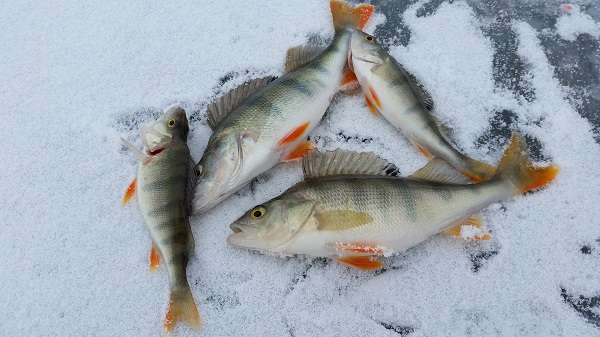
Ambient temperature
Factors such as ambient temperature and its fluctuations have a significant impact on the activity of fish, since the water temperature depends on it. It should be noted that the influence of this factor on winter fishing is much less compared to summer fishing. Winter thaws, after long frosty days, have a particularly beneficial effect on fishing.
The only fish that is not happy with warm days is burbot, which prefers frosty winter weather. Some anglers note that at a frost of 30 degrees, bream begins to show particular activity, although these are not entirely comfortable conditions for fishing and not every angler will want to be in such frost all day.
Cloudiness and biting in winter

The presence of clouds is evidence of established low atmospheric pressure. Many anglers prefer to fish on cloudy days and preferably calm ones. Then you can count on catching predatory fish, since they become much more active.
In such conditions, the temperature regime should also be taken into account, since in severe frosts the activity of bream and roach is possible.
Important point! As a rule, after long frosty days there comes a thaw - ideal for going out for winter fishing.
Water level in a reservoir and its effect on fish biting

As a rule, the water level in a reservoir is not stable and can change significantly under the influence of various factors. If the weather is hot, the water level begins to drop, and in the case of heavy rainfall, on the contrary, it begins to rise. In addition, artificial discharges are possible, both as a result of the collection of water into reservoirs and as a result of the discharge of excess water, which significantly affects the water level in rivers and reservoirs. Such manipulations are especially dangerous in winter, since a lot of fish can die.
A decrease in water level is especially dangerous, and even more so in winter. In such conditions, the fish tries to go to depth and, being in a state of shock, it will not take any bait or lures for a long time. All the more dangerous can be a sharp drop in water level, when the fish simply does not have time to leave the shallow water and is simply crushed by ice. It should also be said that a decrease in water level always has a negative effect and the level of fish activity decreases significantly. This is understandable, since fish live in water, this is its element and its lack negatively affects the behavior of fish in general.
A rise in the water level in a reservoir has practically no effect on the behavior of fish, but this factor can affect the results of fishing, and negatively. When the water level rises, the concentration of fish decreases and it becomes increasingly difficult to catch them. She may simply leave her usual habitats in search of more comfortable conditions.
Important point! The rise of water in a reservoir is a signal to start looking for new fishing spots, since in the usual places you can be left without a catch.
In reservoirs where artificial regulation of the water level is carried out, this effect is less pronounced. The release of water from the reservoir is more important for the reservoir located downstream. Water release can have a positive effect on fish activity, resulting in larger catches.
At what pressure does the fish bite? Fishing weather
Real fishing is not only exciting, but also challenging. In order to achieve success in it, you need to know the weather conditions under which the fish will bite well. You also need to be able to choose a body of water, or rather, fishing spots on it. The influence of pressure on fish biting has also been proven. The correct selection of gear and its quality will also help you not to go home without a catch. And, of course, in order for the fish to bite at all, you need bait and bait. However, do not forget about atmospheric pressure. Its stability and lack of changes are more suitable for fishing. Although an experienced catcher, under any pressure, knows how not to go home empty-handed. So, at what pressure do fish bite? The short answer is simple to formulate: at reduced, and at elevated, and at optimal. In different bodies of water, the pressure that is comfortable for biting may differ. It depends on the location of the river relative to sea level. However, for most reservoirs the standard for comfortable pressure for biting is 750 mm Hg, plus/minus 10 mm. This value is taken as optimal and does not change at different times of the year. When the pressure increases or decreases relative to the optimal one, the bite of some fish species worsens. Well, now let’s take a closer look at the question of at what pressure fish bite and why.
Weather conditions for fishing
Much depends on atmospheric pressure and the presence of precipitation. The weather must be suitable for fishing. Wind, temperature and even pressure all affect the behavior of fish. Therefore, when planning fishing, you need to know the weather forecast for the day chosen for this activity.
Cyclones, anticyclones, magnetic storms and movement in the atmosphere are practically meaningless words for an ordinary person, but a real experienced fisherman will be able to immediately determine from them what the bite will be, and whether the fish will be at least a little active these days. At what pressure does it bite? fish
Moreover, the time of year has a great influence on fishing. For example, in summer, with variable and strong winds, the bite is not very good. And in spring or autumn, such conditions almost do not harm successful fishing. And this is due to the fact that hungry fish are not so sensitive to various atmospheric phenomena. In summer, river vegetation blooms and there is a lot of food under water. Underwater inhabitants have something to eat - food is abundant. This is the reason why fish at this time of year are more capricious and finicky. In autumn, the food becomes much smaller, and she bites more readily, paying little attention to atmospheric pressure.
Spring fishing
Increasing the water temperature is one of the main conditions for success. Early spring is the best time for fishing, as hungry predators, and the bulk of the underwater world, willingly take any bait. The water at this time of year is very clean and therefore you only need to use a thin fishing line and camouflage yourself well on the shore.
A deterioration in the bite may be due to a sharp cold snap, strong pressure changes and heavy winds. Starting from mid-spring, the fish become more and more finicky. It is caught well if the wind is weak and the daily temperature changes are small. River turbidity caused by melt water, rainfall, storms or gusty variable winds has a bad effect on fish.
Summer bite
If the water temperature exceeds 25 degrees, the fish becomes very capricious, and its behavior is greatly influenced by atmospheric phenomena. Windless, cloudy days are considered good weather for fishing. For predatory fish, fishing days are suitable when there are short-term thunderstorms.
The ideal summer time for fishing is early morning and night, when the temperature is slightly lower than during the day. At what pressure do fish from the carp family bite? The best sign is a stable or gradual decrease. With prolonged heat and pressure drops, the bite is poor.
Autumn fishing
The activity of the fish increases with decreasing temperature, as fattening for the winter begins. The fish are very willing to take bait. The best time is warm autumn days, if the wind is not strong.
Pike is best caught in September, in cloudy weather. Days like these are simply ideal for anglers. But the predator is caught until the first cold weather, then its bite declines. And among representatives of the carp family, activity decreases significantly in the fall.
Winter fishing
At what pressure do fish bite in winter? At the same level as in summer - 750 mm Hg. Art. The optimal pressure value does not depend on the time of year. The bite is ideal in sunny and calm weather. It’s good if there was a stable temperature or light frost for several days before fishing. And to catch pike you need low atmospheric pressure. Rudd and bream also bite well in this weather.
If the frosts are severe, then this is the time to catch pike perch and pike perch. The rest of the fish bite reluctantly. Southern and eastern winds, as well as sudden changes in pressure and heavy snowfalls, are not very good for winter fishing. But burbot is not afraid even of snowstorms, so it bites quite well in any weather.
How important is atmospheric pressure for fishing?
This phenomenon is undoubtedly a very important component of the process, but not decisive in everything. Pressure, indeed, affects the behavior of the fish: when it is optimal, it feels great, and accordingly, this is reflected in the bite. If it falls, the bite gets worse.
Normal pressure for fishing is 750 mmHg. Art. It does not cause aquatic inhabitants to desire to reduce their activity. The fish sees the food well and feels great. But if atmospheric pressure rises, the water level drops slightly, and accordingly, its density increases. Therefore, the fish at depth becomes uncomfortable, and it moves higher, where it is comfortable and there is more food. After increasing the pressure for some time there is no bite. As soon as the fish adapts, it resumes.
Atmospheric pressure and bite are interconnected. When the pressure is low, the fish becomes uncomfortable on the surface. And, accordingly, she tries to go deeper and stops pecking. During this period, it is quite difficult for it to obtain food - the fish adapts to new conditions. After a while she gets used to it. After adaptation has passed, the fish begins to actively search for food. The bite resumes at this time.
Why does atmospheric pressure affect fish?
If the pressure is low, it has a very strong effect on the composition of oxygen contained in the water. And the latter, in turn, together with temperature, is the main factor determining the activity of fish. Atmospheric pressure and underwater pressure are different things. The first is much lower than the second. And to equalize the pressure in its bladder, the fish has to lower or rise.
If the pressure, on the contrary, is high, then there is complete calm. The layers of water do not mix, and the fish goes to depth, focusing on the temperature that is more comfortable for it. But since there is little oxygen there, the digestion process is very slow, so she eats little. Because of this, it bites less often. It happens that when there is a prolonged calm, there is a bite for only two or three hours, and then it seems that there are simply no fish in the reservoir. From all of the above, we can conclude that atmospheric pressure is the determining factor for fishing.
So, let's summarize. At what pressure do fish bite? If it is optimal, the wind is moderate, and the movement of water masses is stable, then there will be no problems with the catch. In this case there will be a bite.
Why are mornings good for fishing?
The reason is that the top layer of water cools down overnight and sinks to the bottom. And even if there is high blood pressure at this time, it plays little role. Because this layer is richer in oxygen, and the fish, entering this water, begin to actively feed. All fishing enthusiasts know that at any pressure, and even in the presence of precipitation, fishing in the morning hours goes well. Therefore, they try to come to the pond early, when the fish are biting. Pressure begins to affect fishing after about 10 o'clock in the morning.
What fish to catch at high atmospheric pressure
As the pressure increases, the activity of representatives of the underwater world, which rise upward to feed, also increases. These are mainly bream, roach, silver bream, ide, sabrefish, asp and chub. Young perch are very active at this time. But predatory and bottom fish, on the contrary, reduce their activity. Basically, these are catfish and burbot. Pike perch almost does not react to pressure.
What fish to catch at low pressure
With this pressure, the activity of white fish decreases. She becomes lethargic and sinks deeper. But predators, on the contrary, perk up, because over a long time they have learned to use such natural phenomena for hunting purposes. Basically, these are pike perch, catfish, burbot, large perch and very often pike.
Pike: biting and atmospheric pressure
Fish react to pressure fluctuations much more strongly than people. Each species prefers different pressure, and in only one thing are they almost all similar - they do not like sudden changes. The effect of pressure on the pike bite is such that the fish feels most comfortable at low pressure. biting and atmospheric pressure
This fish feeds every day, but the time of its feeding varies. The usual daily requirement for an adult pike is from ten fish weighing 250 g. Blood pressure and appetite are very interrelated. Despite the fact that pike prefers low pressure for hunting, it also feels good at high pressure, the main thing is that it is stable. When the pressure balance is maintained for up to three days, the pike appetite gains strength. In this case, she catches everything that comes in her way.
A difference of even two millimeters in the mercury column relative to the optimal pressure does not significantly affect fishing. The fish simply reduce their diet a little. If the pressure changes sharply for several days, then the pike shows relative indifference to food. But the biting does not stop completely. For this time, you just need to choose the right gear, feeding place and fishing time. The fish feeds every day, which means there will still be a bite, but not as active as we would like. For the depth of pike habitat, pressure does not play a role at all. She can be located anywhere.
What is the effect of pressure on fish biting when it becomes steady? This period occurs in the middle of summer. It is marked by poor fishing, since the pike is in an uncertain state and hardly feeds. If stabilization occurs after a drop in pressure, then the fish continues to bite for some time - simply by inertia. But for this you need to actively lure her with bait. influence of pressure on pike biting
How does a pike behave if the atmospheric pressure rises?
In this state, she can completely refuse food and remain hungry all day, without bothering anyone. At this time, on the contrary, the small fish are activated, taking advantage of the indifference of the predator. During this period, the pike feeds on insects, sick weak fish and worms.
For successful pike fishing, you need to use fly rods (flies), baits with a twister, plastic or natural frogs, pieces of dead fish and spinnerbaits. Early in the morning or late in the evening the bite becomes a little more active.
Features of fish swim bladders and the effect of pressure on them
The swim bladder is filled with gases that are compressed if the pressure increases, and vice versa. Its volume changes, and so does the fish’s buoyancy.
Roach, bream and perch get rid of excess gas, which is in the bubbles, very quickly. This is what they do when the pressure drops. But the restoration of the required amount of gas with increasing pressure is much slower. influence of pressure on fish biting
When will the best bite be?
The ideal weather for fishing is windless, warm, quiet and cloudy days. A good bite can also occur during prolonged bad weather or, conversely, if the weather is good and stays for a long time. The fish can be very active just before a thunderstorm. If there has been a long drought and after small, short rains, fishing will also be successful. The bite is quite good in sunny weather and if the south wind blows, as well as in light, drizzling rain, which gives light ripples on the water. Some species of fish are excellently caught if the wind blows opposite to the current.
Beginners will certainly find this information useful. And experienced fishermen are well aware of fishing methods in any weather and use weather conditions, as well as atmospheric pressure, to their advantage. Therefore, when they go to a pond, they know for sure that they will not return home with empty cages.
Suitable weather for perch fishing
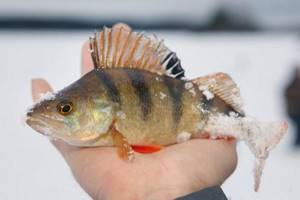
It’s no secret that perch is the most active fish in winter and the bulk of the catch comes from this type of fish. You can count on an active perch bite in calm frosty weather in conditions of stable atmospheric pressure. A good option is a thaw after long frosty days. In such conditions, this ubiquitous predator can be caught throughout the daylight hours. When there is heavy snowfall outside, you should not go fishing with the hope of catching a perch.
Tackle for catching perch in winter

In winter you can fish with jigs, balance beams and spoons, less often with jigs. Bloodworms, caddisfly larvae, and maggots are used as bait. If there is a good bite, then some anglers catch by eye a perch that has already been caught before. As for fishing with lures, in cloudy weather it is worth using silver and white colors, and in sunny weather - brass or copper.
The gear should be the following: a regular fishing rod, thin fishing line, no more than 0.2 mm, a silver or yellow jig and a winter float. For trolling, use a standard live bait fishing rod.
Fish promising places, watch the actions of other anglers, look for places where you have already fished and you will definitely end up with some catch.
Read! Winter fishing for perch with a jig
Pike behavior in winter
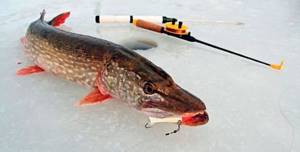
Pike is a predatory fish that is much easier to catch on sunny, warm days, when atmospheric pressure readings are at the same level for several days in a row. This dependence is most relevant for the wilderness, but when the pike begins to feel the approach of spring, its behavior changes radically.
We can safely say that natural conditions, or rather their constant change, are the decisive factor in successful or unsuccessful fishing. Therefore, every angler should have a complete understanding of when you can go fishing, and when it is better to stay at home and not expose yourself to bad weather, severe frosts or precipitation in the form of annoying rain.
Perch fishing in February
Winter is coming to an end, and you need to have time to enjoy ice fishing one last time. But the presence of oxygen in reservoirs in February is so low that all the inhabitants of the reservoir are very lethargic and do not pay attention to the bait. But, as in other winter months, perch comes to the aid of the fisherman, which, even in such conditions, is distinguished by its gluttony.
Read! Catching pike in winter on girders
Where to look for perch in February?
As you know, ice fishing depends 80 percent on the search for fish, and February is no exception. Perch loves high-quality water, so look for it in places where there is at least some source of oxygen: inflowing rivers and streams, springs, underwater snags and bushes, large riffles, etc. It should also be remembered that during the day most often the striped fish can be found at depth, and in the late afternoon - in shallow places. The presence of a fry also signals that there is a perch somewhere nearby, since it would not be very wise for it to leave its food base during a difficult period. Therefore, if you come across a school of fry, then feel free to start fishing for perch near this place.
How to catch perch in February?
In February, perch can be caught using both lures and jigs. Also performing well is catching perch on a balda, which was used by our grandfathers.
When winter lures, reliable fishing rods with a reel and an elongated whip with a nod of at least 80 mm are used, for greater convenience when playing the lure. The fishing line should be 0.15 - 0.20 mm in diameter. The catchability of different types of spoons in different bodies of water and under different weather conditions is also different, so always experiment in this regard.
When jig fishing, always use a thin line and a fairly sensitive nod. Bloodworms perform best as bait. Shapes of jigs: pellet, larva, drop; up to 4 mm in diameter and up to 5 mm in hook height.
Some anglers, in order to stimulate the sluggish February perch, often combine fishing with a spoon and a jig, which very often gives positive results. To do this, drill several holes, go through them first with a spoon, and then with a jig.

